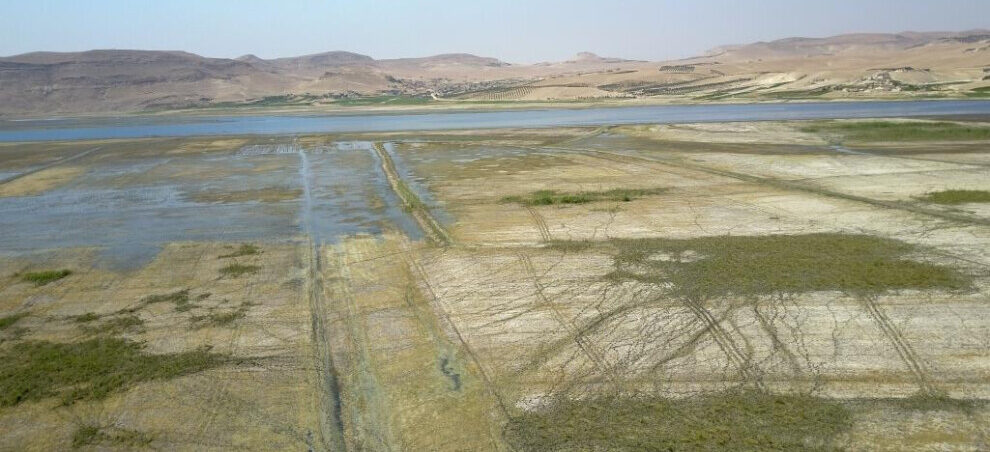Latest images show that the waters of the Euphrates River have decreased significantly as a result of the water war waged by the invading Turkish state against the people of North and East Syria.
Images captured on the banks of the Euphrates reveal that a large part of the Euphrates River has dried up. These areas which were once a source of life for the region have now become arid lands.
The images taken by ANHA at the Rojava Dam (Tishrin), Syria’s second largest dam on the Euphrates River, show that the waters of the river have decreased significantly.
The Turkish state, which has been using the Euphrates water as a weapon against the Syrians for years, cuts off the waters flowing into Iraq and Syria to a large extent.
According to the agreement signed between the governments of Damascus and Ankara in 1987, Turkey is supposed to deliver 500 cubic meters of water per second to Syria. However, the invading state does not comply with the agreement, delivering only 200 cubic meters of water per second currently.

The negative effects of the dwindling waters can be seen clearly on the ground. Due to the water cuts, the waters in the dam lakes in Syria have decreased, while electricity production and electricity supply to the region have diminished.
Moreover, the amount of agricultural land on the banks of the Euphrates is decreasing. Most importantly, access to drinking water has become difficult. This situation is causing major health problems.
The Autonomous Administration of North and East Syria warned that the Turkish state’s policy to decrease the waters of the Euphrates River would cause humanitarian crises in the region, jeopardizing 9 million Syrians living in areas close to the river.
The Dams Administration of North and East Syria called on the international community and human rights organizations to stop the provocative actions of the Turkish state.

